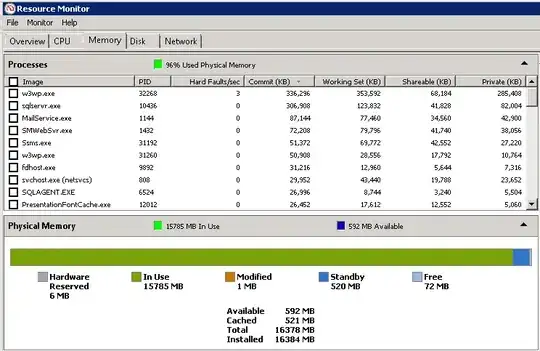I hope someone can help. We've got a Windows Server 2008 R2 machine with 16GB of RAM that keeps getting all its available memory eaten by something. Nothing in Task Manager or Resource Monitor reveals any process using memory above 300MB... but memory usage on the server is 15.7GB.

The only things running are SQL Server 2008 and IIS7.5 (with ASP.Net).
Note: RAM usage after a reboot starts low and works its way up. After a week or so we keep finding outselves in this situation.
How can I discover what's eating all our memory? :(